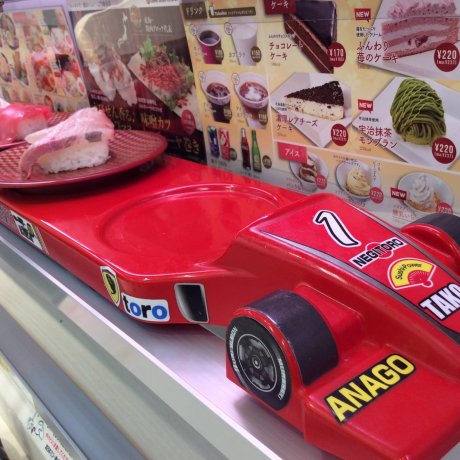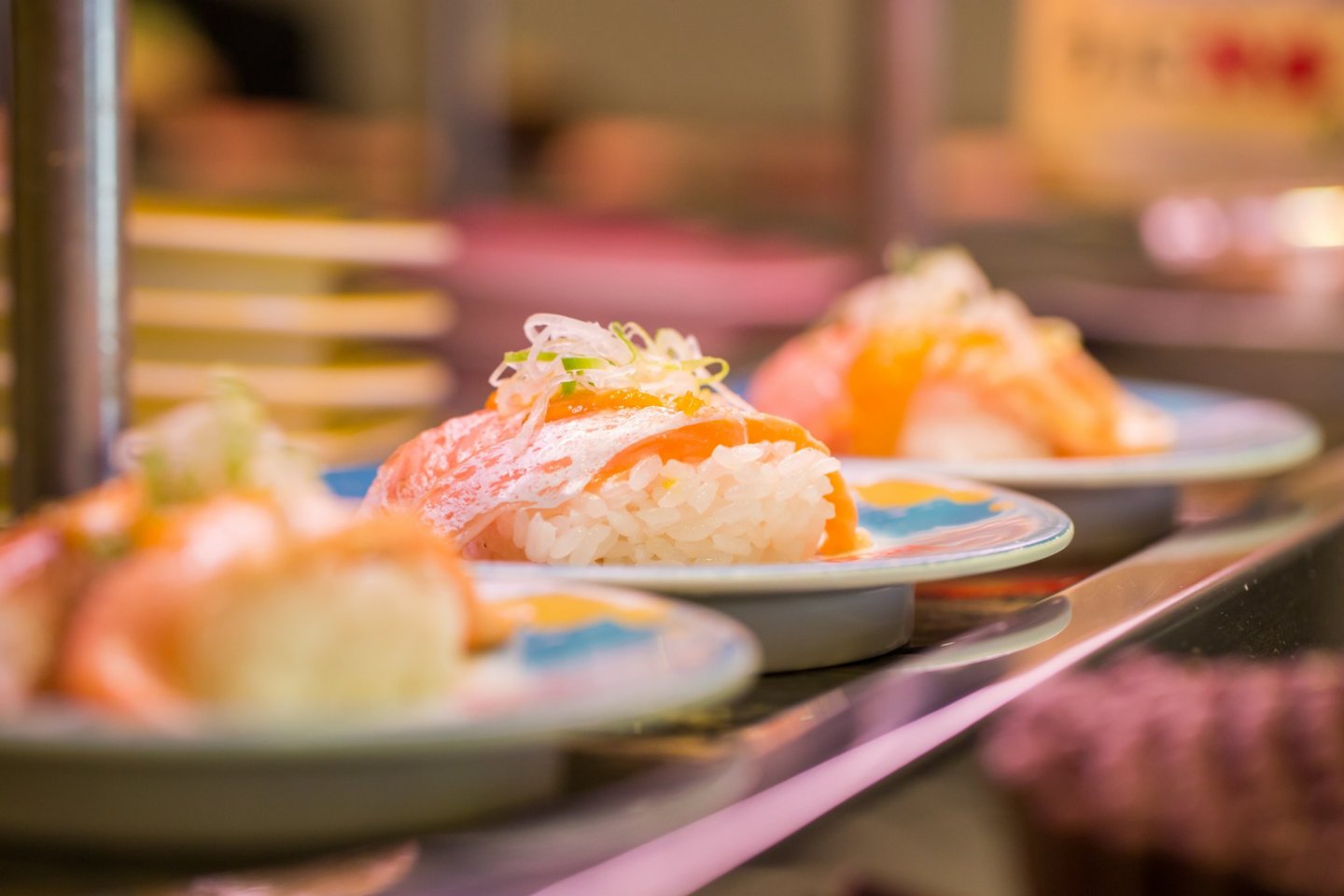Kaitenzushi are also known as conveyor belt sushi restaurants, sushi-go-rounds, or sushi trains. At a kaitenzushi, a moving belt circulates in front of diners to deliver plates of pre-made nigiri sushi and other menu items.
The first kaitenzushi was opened in the Osaka area in 1958. Since then, kaitenzushi restaurants have spread across the globe and can be found as far afield as Australia, the United States, and across Europe.
Kaitenzushi offers incredible convenience, affordable pricing, a large selection, and incredible speed of service. They may not offer the freshness of Tokyo's fish market, but are also much easier to get to and family friendly too.
Popular Kaitenzushi Chains
There are many kaitenzushi restaurants in Japan, although most sit outside the main urban centers of cities like Tokyo, Osaka, and Kyoto. Kaitenzushi are a common site in suburban neighborhoods and in many smaller provincial cities.
Some of the more popular or commonly-seen kaitenzushi chains in Japan are Sushiro, Kura-zushi, and Kappa Zushi. Kura-zushi in particular is known for its unique plate “disposal” system – when diners are finished eating, plates are dropped into a chute at the table and tallied electronically. For every five plates that are returned, visitors are even treated to an electronic game that occasionally pays out with small prizes.
You might like


Kura-Zushi
With branches all across Japan, Kura-Zushi is known as a high-tech sushi restaurant, where the experience is more than just sushi..

Kappa Zushi Sushi Restaurants
Kappa Zushi is a family restaurant combined with a conveyor belt-sushi shop. With a multi-lingual touch panel menu at every table,..


Uobei Sushi in Utsunomiya
Even if you don`t like raw fish, or any kind of fish at all, you can find a snack on the menu at Uobei that will please.
How to Select Food or Order
At a kaitenzushi, there is sometimes no need to place an order at all. Chefs are constantly adding plates of various types of sushi to the conveyor belt. As they pass by, customers are welcome to take whatever plate suits their fancy (unless the plate has been placed on a “special order” holder). For many, the selection on the belt is often varied enough that no other orders are needed. In some restaurants, the sushi plates are encoded with an electronic chip to ensure they are removed from the belt if they’ve been sitting out too long.
However, to ensure maximum freshness or to make a request for a particular kind of sushi, it may be necessary to place an order. At most kaitenzushi restaurants, this is accomplished via an iPad or electronic menu system that is connected to each diner’s individual seat or table. Orders are then relayed to the kitchen and sent out on the belt either via plates indicating a special order or are delivered on a second, separate conveyor belt, usually located above the main belt. The delivery system for these personal orders can vary, but can be entertaining in themselves – the more unique ones include mini shinkansen trains or boats that are floated on special canals!
In certain smaller kaitenzushi, an electronic ordering system may not exist. In that case, diners are invited to place their orders directly with the chefs behind the counter, simply by calling out the type of sushi they would like to order (i.e. maguro {tuna} kudasai or maguro to hamachi {yellowtail} kudasai).
You may place as many orders as you like over the course of your dinner, but it’s customary to only ask for one or two types of sushi at one time.
How to Pay
Price at a kaitenzushi depends on the type of sushi ordered and is easily tallied by the unique plate or color-coding system. The price breakdown is usually displayed on the restaurant’s written menu or on the wall of the establishment itself.
When finished, diners should either ask their server for the bill or touch the button on the electronic touchpad requesting a bill. A staff member will come over to count the plates and add up any additional food or drink items. The final bill is then usually taken to the front of the restaurant and paid at the cashier stand.
Note that many sushi restaurants are cash only, so check in advance if you prefer to pay by credit card.



























